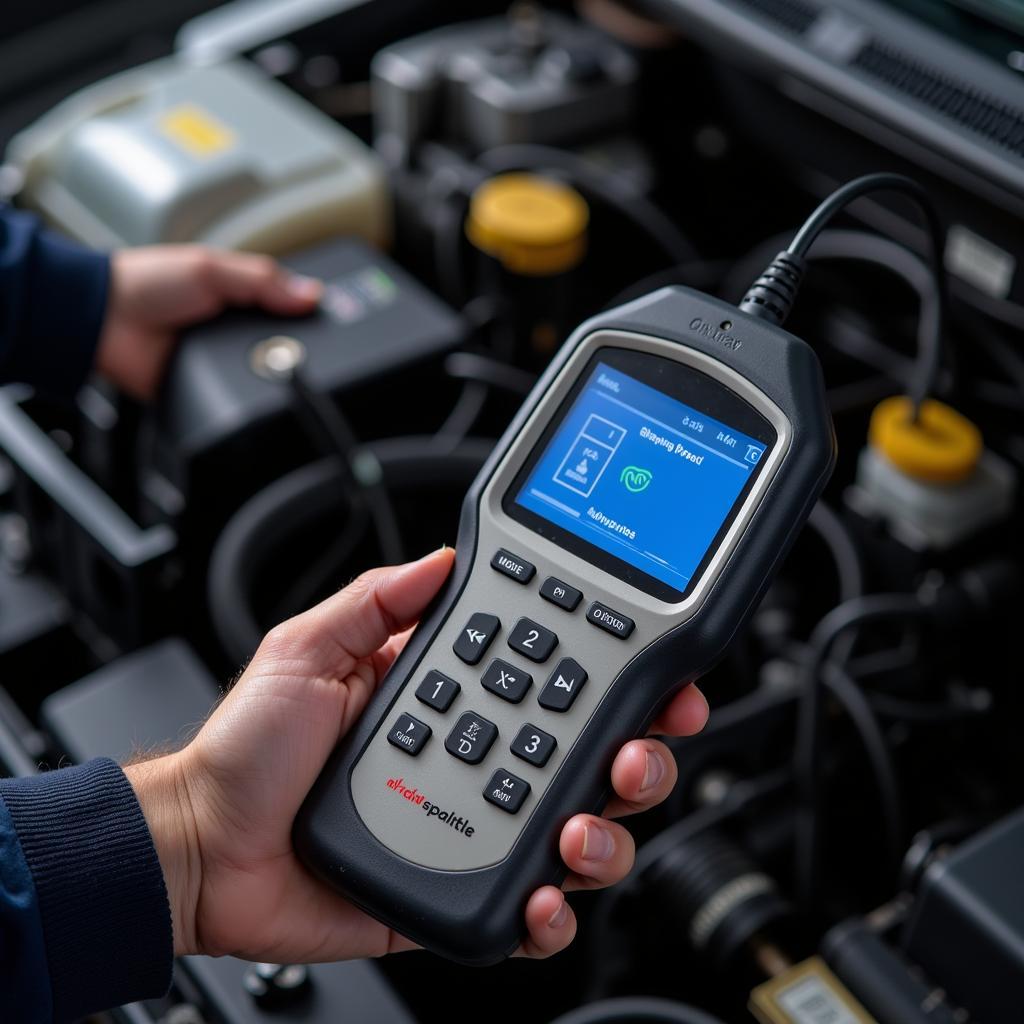OBD2 PEL, or Pending Emission Codes, might sound like a technical jargon storm, but understanding them can save you time, money, and unnecessary headaches. These codes are like early warning signs your car sends, hinting at potential emission control system issues before they become full-blown problems.
Think of your car’s emission control system as a complex orchestra. Each component needs to play its part perfectly to ensure clean and efficient operation. When an instrument is slightly out of tune, you might not hear a jarring note right away (that’s where a confirmed trouble code would come in), but a keen ear might detect a subtle dissonance. That’s essentially what a pending code does – it alerts you to a potential issue that hasn’t quite reached the “check engine light” stage yet.
What Triggers an OBD2 PEL?
Your car’s onboard computer constantly monitors various sensors and components within the emission control system. When it detects a reading that falls outside the pre-defined acceptable range, it sets a pending code. This doesn’t immediately trigger the dreaded check engine light because the computer needs further confirmation. It will continue monitoring the system for a specific number of driving cycles, which usually involve a mix of cold starts, highway driving, and idling.
Let’s say a sensor in your evaporative emission control system (EVAP) detects a slight leak in your gas cap. This anomaly might trigger a pending code. However, if you quickly realize your mistake and tighten the gas cap, the system might not detect the leak during subsequent driving cycles, causing the pending code to clear itself.
Why Should You Care About OBD2 PELs?
Ignoring pending codes is like ignoring the faint smell of smoke in your house – it might not be a full-blown fire yet, but it’s a warning sign you shouldn’t dismiss. Addressing pending codes early can:
- Prevent Costly Repairs: Catching potential issues early allows you to address them before they escalate into major (and expensive) repairs.
- Maintain Optimal Fuel Efficiency: A malfunctioning emission control system can negatively impact your fuel economy.
- Reduce Your Environmental Impact: A well-maintained emission control system ensures your vehicle meets environmental regulations and minimizes harmful emissions.
- Pass Emission Tests with Flying Colors: Pending codes can sometimes turn into confirmed trouble codes, potentially leading to a failed emission test.
 Mechanic Diagnosing Pending Emission Code
Mechanic Diagnosing Pending Emission Code
How to Check for OBD2 PELs?
While some basic OBD2 scanners might only display confirmed trouble codes, many affordable models on the market can read both confirmed and pending codes. Investing in a reliable OBD2 scanner empowers you to take control of your car’s health.
Here’s a quick breakdown of how to check for pending codes:
- Locate your car’s OBD2 port. This 16-pin port is typically located under the driver’s side dashboard.
- Plug in your OBD2 scanner. Ensure the scanner is compatible with your vehicle’s make and model.
- Turn the ignition on but don’t start the engine. This powers up the scanner and allows it to communicate with your car’s computer.
- Follow the scanner’s instructions. Navigate to the “Pending Codes” or “Pending DTCs” section (the exact terminology might vary depending on the scanner model).
Common OBD2 PEL Misconceptions
There are a few common misconceptions surrounding pending codes:
- “They’ll go away on their own.” While some pending codes might clear themselves, others can linger or even turn into confirmed trouble codes if the underlying issue isn’t addressed.
- “They’re not serious.” Pending codes serve as early warnings. Ignoring them can lead to more significant and costly problems down the line.
- “Only mechanics can understand them.” While diagnosing the root cause of a pending code often requires professional expertise, understanding the basics empowers car owners to be proactive about their vehicle’s maintenance.
OBD2 PEL: Your Car’s Way of Saying “Take a Look”
OBD2 pending emission codes are valuable insights into your car’s health. By understanding what they are, why they matter, and how to check for them, you can become a more informed and proactive car owner, saving yourself time, money, and potential headaches down the road. Remember, your car often communicates its needs in subtle ways – paying attention to these early warnings can make all the difference in maintaining a healthy and happy vehicle.
FAQ
1. How long do OBD2 pending codes stay active?
Pending codes typically clear themselves after a certain number of driving cycles (usually between 5 and 50) if the issue hasn’t reoccurred.
2. Can I clear OBD2 pending codes myself?
While you can clear pending codes using an OBD2 scanner, it’s not recommended unless you’ve addressed the underlying issue. Simply erasing the code doesn’t solve the problem.
3. Do all OBD2 scanners read pending codes?
Not all OBD2 scanners have the functionality to read pending codes. It’s best to check the scanner’s specifications or user manual to confirm its capabilities.
4. What should I do if a pending code turns into a confirmed trouble code?
If a pending code becomes confirmed, it’s essential to have your car diagnosed by a qualified mechanic as soon as possible.
5. Can extreme weather conditions trigger OBD2 pending codes?
Yes, extreme temperatures, humidity, or altitude changes can sometimes affect sensor readings and potentially trigger pending codes.
Need further assistance?
Contact our dedicated customer support team via WhatsApp: +1(641)206-8880 or Email: [email protected]. We’re available 24/7 to assist you with all your OBD2 and car diagnostic needs.

